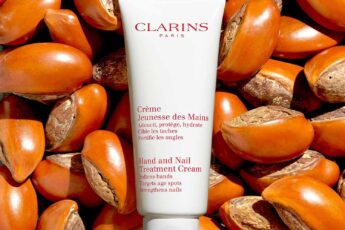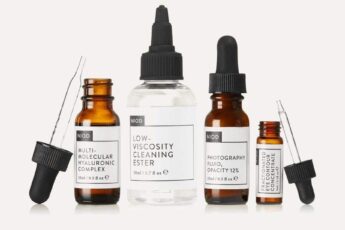Have you ever picked up a skincare product, turned it over, and seen a strange word like PDRN on the label? I remember the first time I did — I was standing in a store, squinting at the back of a serum bottle, thinking, what on earth is this? It sounded like something from a science lab, not something I’d put on my face.
But curiosity got the better of me, so I started digging. And once I understood what PDRN in skincare really is and what it does for the skin, it felt like finding a quiet secret in the middle of all the skincare noise.
If you’ve ever wondered what PDRN is in skincare, let’s sit down and talk about it like friends — no fancy science words, no complicated chemistry, just a clear, simple chat about what this ingredient is and why it’s become such a quiet favorite among people who love taking care of their skin.
Table of Contents
Key Takeaways
- PDRN stands for Polydeoxyribonucleotide — a compound from salmon DNA that helps your skin repair itself.
- It boosts cell growth, calms irritation, and supports collagen.
- Works best over time, giving your skin a natural, healthy glow.
- Gentle enough for most skin types.
- Found in serums, creams, and ampoules.
- Patience pays off — results build quietly and steadily.
What Is PDRN in Skincare?
Let’s start with the basics. PDRN stands for Polydeoxyribonucleotide — I know, it’s a mouthful. But don’t worry, you don’t need to memorize it. The short version? It’s a compound that comes from salmon DNA, and before you cringe, it’s not as strange as it sounds.
Think of PDRN as a building block that helps your skin repair itself. It’s something that naturally works with your body’s own healing process. Instead of forcing your skin to change, it gives it the gentle nudge it needs to recover and renew.
When I first heard that PDRN came from salmon, I thought, fish and skincare — really? But it turns out, salmon DNA has a structure very similar to human DNA, which means our skin recognizes it and knows what to do with it. That’s part of why it’s become a favorite in aesthetic clinics — it’s used for calming redness, healing after treatments, and bringing tired skin back to life.
So when people ask, “What is PDRN in skincare?” the simplest answer is this: it’s a healing ingredient that helps your skin look and feel like itself again.
How PDRN Works on Your Skin
Now, here’s where it gets interesting — and I promise to keep it simple. Imagine your skin as a big city that never sleeps. Every day, it deals with pollution, sunlight, makeup, and stress. Over time, the buildings (your skin cells) start to wear down. PDRN steps in like a quiet construction team, helping to repair those tiny cracks and rebuild the foundation.
In more practical terms, PDRN:
- Encourages new cell growth.
- Helps your skin repair itself faster after irritation.
- Improves elasticity (that natural bounce in your skin).
- Supports collagen production, which keeps your skin firm.
You can think of it as your skin’s gentle “reset button.” It doesn’t make you look like someone else. It just helps your skin return to its natural rhythm — soft, calm, and strong.
When I started using a PDRN serum, I noticed something subtle. My skin didn’t suddenly glow overnight or look dramatically different. Instead, over a few weeks, it just looked more rested. Like it finally got a good night’s sleep after being tired for too long.
Also Read: VTAMA Cream: The Powerful Skin Relief You Didn’t Know You Needed
The Benefits of PDRN
Let’s break down what PDRN actually does, without the fluff:
- Speeds up skin repair: If your skin gets red or flaky easily, PDRN helps it recover faster.
- Calms irritation: It’s especially kind to sensitive skin that reacts to everything.
- Boosts hydration: It locks in moisture, which makes your skin look softer and more even.
- Smooths texture: Over time, it helps reduce fine lines and rough patches.
- Gives a healthy glow: That quiet kind of glow that doesn’t come from glitter or shimmer — just well-rested, balanced skin.
I remember a friend of mine started using a PDRN cream after a mild skin procedure. She said her skin didn’t feel “angry” like it usually did afterward. Instead, it healed quietly, without all the peeling and redness. That’s the kind of change PDRN brings — calm and steady.
How It Feels When Used
If you’ve ever used a PDRN serum or ampoule, you’ll notice it feels light — not sticky, not greasy, just smooth. When I apply it, it sinks right in and leaves a soft, almost silky finish. There’s no strong scent or burning sensation. It’s just… soothing.
Some people describe it as their “comfort product.” You know how there’s that one skincare product you reach for when your skin feels upset? That’s what PDRN becomes for many.
It’s often found in serums, ampoules, or creams. I personally like serums because they layer easily under moisturizer. But if your skin is dry or sensitive, a cream might feel more comforting.
There’s something about using products like this that makes you slow down — just a few quiet minutes of massaging it in, letting your skin breathe, and reminding yourself to rest too.
Is PDRN Safe for Everyone?
That’s a good question — and an important one. PDRN is known to be gentle, even for sensitive skin. It’s used in medical and cosmetic treatments, especially after procedures like laser or microneedling, to help the skin recover faster.
But as with anything new, it’s always smart to do a patch test first. I remember trying a new PDRN cream once and testing it on my jawline before using it on my full face. It’s a small habit that saves you from possible irritation.
Most people find it calming, not reactive. If your skin easily gets red, dry, or tight, PDRN might actually help ease that over time.
How to Add PDRN to Your Routine
The good thing about PDRN is that it fits easily into your skincare routine. You don’t have to change everything — just add it where it makes sense.
Here’s how I’d suggest starting:
- Begin with a PDRN serum or ampoule.
- Use it after cleansing and toning, before your moisturizer.
- During the day, always finish with sunscreen.
- At night, you can seal it in with a nourishing cream.
If you’re already using actives like retinol or vitamin C, use PDRN on alternate nights or in the morning to balance things out.
One thing I learned the hard way is that patience really matters. It’s tempting to use new things every night and expect instant results, but PDRN works best when you give it time. Think of it as a slow and steady friend — the one that always shows up quietly but makes a big difference over time.
Check Out: Strawberry Skin Treatment: A Simple Guide to Smooth, Bump-Free Legs
What to Expect (Realistic Results)
Let’s be honest: PDRN isn’t a magic potion. It won’t erase wrinkles overnight or turn you into a different person. But if you stick with it, you’ll notice small, steady changes that build up.
Here’s what I noticed after using PDRN for about a month:
- My skin felt smoother, not because it was exfoliated, but because it was healthier.
- The redness I used to get after washing my face faded faster.
- My skin tone looked more even, like the surface had settled down.
- It’s like your skin starts cooperating with you again instead of fighting back.
If you’re someone who’s struggled with irritation, uneven texture, or just dull skin that refuses to wake up, PDRN might be the quiet support you didn’t know you needed.
Give it a few weeks. You’ll probably start noticing that your skin doesn’t “panic” as much. It feels calm, stable, and quietly alive.
Conclusion
So, what is PDRN in skincare, really? It’s that quiet helper in your skincare routine — the ingredient that doesn’t shout but works in the background to keep your skin balanced and healthy.
When I think about it, PDRN reminds me of those moments when you finally slow down after a long week — when your body rests, and everything just starts to feel right again. That’s what it does for your skin. It doesn’t demand attention. It just helps your skin remember what it’s supposed to be — calm, strong, and alive.
If you’ve been searching for something gentle but effective, something that helps your skin heal rather than fight, PDRN might be worth trying. It’s not about chasing perfection. It’s about giving your skin a chance to breathe, recover, and glow quietly in its own way.
Frequently Asked Questions
Can I use PDRN every day?
Yes, you can. Most PDRN serums and creams are gentle enough for daily use, both morning and night. Just make sure you layer it under your moisturizer and sunscreen.
Is PDRN suitable for acne-prone skin?
Yes, it can actually help calm inflammation and support healing. If you’re using strong acne treatments, PDRN can balance your skin and reduce irritation.
Can PDRN replace retinol?
Not exactly. Retinol speeds up cell turnover, while PDRN focuses on repair and regeneration. If retinol feels too harsh for you, PDRN is a good alternative for smoother, calmer skin.
How soon will I see results from PDRN?
Give it a few weeks. Around the 3 to 4-week mark, you’ll start noticing softer texture, less redness, and more balanced skin.



